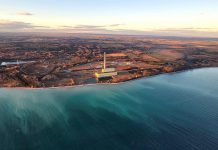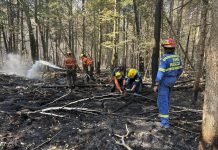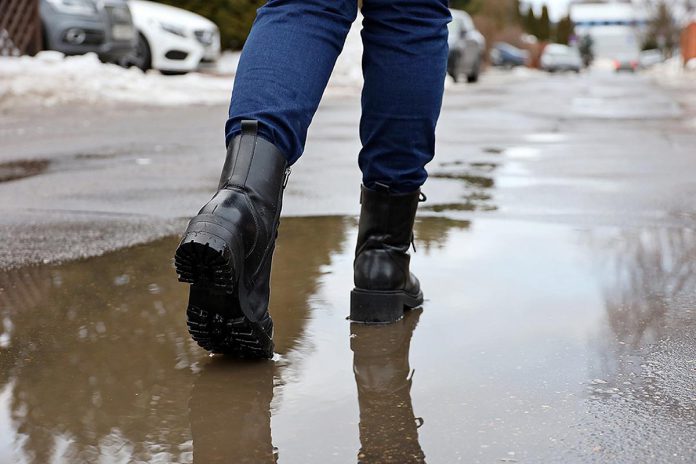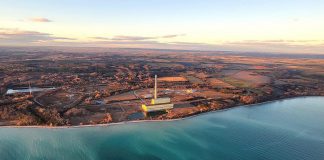We’ve reached the point in the season when each new snowfall elicits a weary sigh. I grab my shovel, again. For many urban dwellers, snow is first and foremost a problem to be solved. Who will move it? Where will it go?
Such concerns are valid. Keeping our streets, bike lanes, and sidewalks clear is essential, especially for people who use mobility devices or rely on public transportation to get around.
At the same time, snow is an important part of a balanced water cycle and a healthy watershed.
Join me in a journey of snow appreciation as winter draws to a close (not really, but one can dream). Where does snow go, and how can we treat it like the important resource it is?
Why does snow matter?
In cold-weather climates, seasonal snowfall plays an important role in replenishing freshwater resources, including creeks, rivers, and lakes, as well as soil moisture and groundwater supplies.
Too much or too little, too fast or too slow to melt — these disruptions increase risk of flooding and drought, and harm local plants and aquatic life, among other impacts.
Climate change is disrupting snowfall patterns at a global scale, sometimes in unpredictable ways. A 2020 study published in Nature found that snow mass has fallen in North America over the past 39 years, while it has remained stable or has increased in parts of Eurasia.
The impacts of these global shifts are significant. They affect everything from vegetation and ecosystem health to surface cooling. However, it is much more difficult to gauge the impact of climate change on snowfall patterns at smaller scales.
How does melting snow affect flooding and drought?

To learn more about the delicate balance between snow and watershed conditions at the local level, I turned to Gordon Earle, water resources technician at Otonabee Conservation.
“The depth and extent of snow and ice, the water content of the snow and ice available for melting, the ground and atmospheric conditions at the time of melt, and the timing of snow and ice melt all combine to determine watershed conditions for months afterward,” Earle explains.
For example, flooding is possible in winter and spring. These flood conditions can happen when snowmelt combines with the right combination of weather and ground conditions to overwhelm waterways and municipal stormwater systems. I’ve seen this first hand in my own backyard, which is in the Curtis Creek floodplain located in the East City area of Peterborough.
Snowpack and melt patterns can also contribute to drought. This can happen because not enough meltwater is able to soak into the soil and replenish groundwater.
“For the past two years, snowpacks in the region have melted about one month earlier than normal, and much of the water content was lost to evaporation,” Earle says.
“More of the snow melt ran off the land into watercourses, as opposed to seeping into the ground where it would have raised groundwater levels and replenished soil moisture. These conditions led to earlier-than-normal drought conditions in consecutive years, a phenomenon not previously observed in the region.”
Cycles of flooding and drought are further exacerbated in cities. Cities tend to have a higher concentration of paved surfaces, and that means less precipitation is absorbed where it falls. If you live in a city, there is a good chance that the snow accumulating on the roof of your house or garage will drain directly into the stormwater system rather than being absorbed into the ground.
What can you do?

The good news is, there are things you can do to help manage snow throughout the year.
Pile snow on permeable surfaces as much as possible, such as lawns or garden beds. Make sure the spot you choose slopes away from your home’s foundation, to limit the risk of basement flooding. As the snow melts, a portion of it will be absorbed into the ground.
Minimize the use of de-icing salt. When necessary, choose a product that is less harmful to the environment. For more tips, check out the recent GreenUP column about de-icing products, guest authored by Otonabee Conservation’s Karen Halley.
If you garden, focus on building healthy soil. Soil that is rich in organic matter and densely planted can hold significantly more moisture than bare, lifeless dirt. Adding composted material to the surface of the soil and planting native groundcovers will help store some of that melted snow for use throughout the growing season.
Disconnect your downspouts and direct them into a rain garden. A rain garden is a bowl-shaped garden that takes in water from roofs, driveways, and other hard surfaces. Rain gardens are more effective than lawns at slowing, storing, and infiltrating large volumes of water. They can also provide significant habitat for pollinators and other wildlife.
The City of Peterborough offers a subsidy to help offset the cost of building a rain garden. To find out more, visit the city’s website or email Hayley Goodchild at hayley.goodchild@greenup.on.ca. For rain barrel purchases or Water Wise resources, visit greenup.on.ca.



























